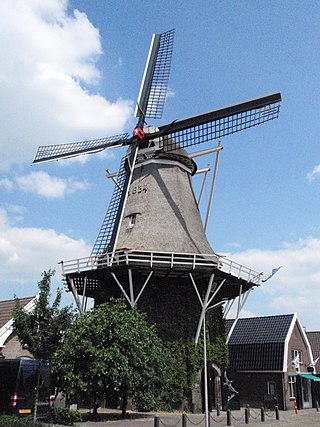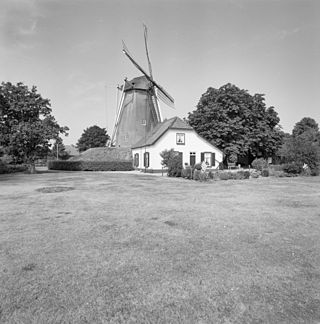
Hasselt is a Belgian city and municipality. It is the capital and largest city of the province of Limburg in the Flemish Region.

Alken is a municipality located in Belgian province of Limburg. The community lies just south of the provincial capital of Hasselt, in the Hesbaye region. Alken has about 11,300 residents, which gives the village a larger population than the nearby small cities of Borgloon and Herk-de-Stad.

Hasselt is a city in the municipality of Zwartewaterland about 7 km north of Zwolle, in the Dutch province of Overijssel. After it received city rights in 1252, it became a member of the Hanseatic League around 1350. The city suffered an economic downfall from about 1550 on, as other cities proved to be better situated and equipped for trade and commerce. In 2001 the municipalities of Hasselt, Genemuiden and Zwartsluis were united in the municipality of Zwartewaterland, of which Hasselt became the administrative centre. As of 1 January 2021, Hasselt had a population of 7,385.
Bouches-de-l'Yssel was a department of the First French Empire in the present-day Netherlands. It was formed in 1810, when the Kingdom of Holland was annexed by France. Its territory corresponded with the present-day Dutch province of Overijssel. Its capital was Zwolle.

Burdaard is a village in Noardeast-Fryslân in the province of Friesland, the Netherlands. It had a population of around 1,173 in January 2017. Before 2019, the village was part of the Ferwerderadiel municipality.

De Zwaluw is a smock mill in Hoogeveen, Drenthe, the Netherlands which is working commercially. It is the third mill to stand on this site as two previous mills both burnt down. It was built in 1834 and is listed as a Rijksmonument, No. 22254.
De Zwaluw is a name given to some windmills in the Netherlands:

De Zwaluw is a smock mill in Burdaard, Friesland, Netherlands which is working commercially. The mill is listed as a Rijksmonument, number 15585.
A Tjasker is a type of small drainage windmill used in the Netherlands. There are four tjaskers remaining in Drenthe.

De Zwaluw is a smock mill in Oudemolen, Drenthe, the Netherlands. It was built in 1837 and is listed as a Rijksmonument, number 38148.

De Os is an oil windmill in the Zaanse Schans, Zaanstad.

De Zoeker is the name of an oil windmill, located in the Zaanse Schans, Zaanstad. Its purpose is to press seeds such as linseed and rapeseed into vegetable oil. It is the only oil mill still in operation, and is one of five remaining oil mills in the area.

De Gans is a smock mill in Ezumazijl, Friesland, Netherlands which has been restored to working order. The mill is listed as a Rijksmonument, number 31571.

De Weyert is a smock mill in Makkinga, Friesland, Netherlands which was built in 1925 and is in working order. The mill is listed as a Rijksmonument, number 31725.

Herkenrode Abbey was a Catholic monastery of Cistercian nuns located in Kuringen, part of the municipality of Hasselt, which lies in the province of Limburg, Belgium.

De Hoop is a smock mill in Stiens, Friesland, Netherlands which was rebuilt in 1993 after the earlier mill burned down. It is operational and manned by volunteers.
A tjasker is a type of small drainage windmill used in the Netherlands. There are thirteen tjaskers remaining in Friesland.
A Tjasker is a type of small drainage windmill used in the Netherlands and Germany. There are 28 tjaskers remaining the Netherlands.

De Keetmolen is a windmill in Ede, Netherlands. According to the inscription under the sails and the sign at the entrance, the mill was built in 1750. This is incorrect; according to municipal records, the building permit issued in 1856 stated that the mill should be built within two years. The mill was opened in 1858.

Zeldenrust is a smock mill in Oss, Netherlands.
This page is based on this
Wikipedia article Text is available under the
CC BY-SA 4.0 license; additional terms may apply.
Images, videos and audio are available under their respective licenses.
















